Hamstring exercises, like squats, straight leg deadlifts and leg extensions, can increase your strength, flexibility and leg stamina- They can help to prevent and relieve lower back pain, as these exercises all work the lumbar back.
In addition, these exercises can work the glutes and lead to muscle gains in this area, reducing excess cellulite.
It is important to consult a personal trainer or fitness instructor about these exercises to prevent injuries, especially if you are typically sedentary or have reduced flexibility. It is also important to stretch and warm-up your legs before performing these exercises.
1. Squats
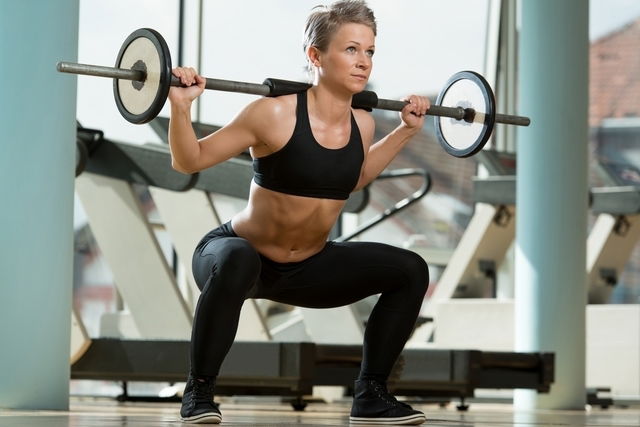
Squats employ many muscle groups, including the hamstrings. They can be done various ways: using your body weight, dumbbells, or a barbell on the back or shoulders, depending on your activity level and fitness goals.
You can perform a squat with a barbell on your back, holding the bar with your palms facing forward and your elbows pointing toward the floor. Squats can also be done with the barbell on your shoulders in front of your neck by holding onto the barbell in a crossed-arm fashion.
With barbell squats, be sure to keep your heels firmly on the ground and try to hit a full range of motion to optimize your hamstring workout.
How to perform at home: You can perform a squat with solely your body weight, or with dumbbells. Be sure to hit a full range of motion and to keep your heels on the ground.
2. Straight leg deadlifts
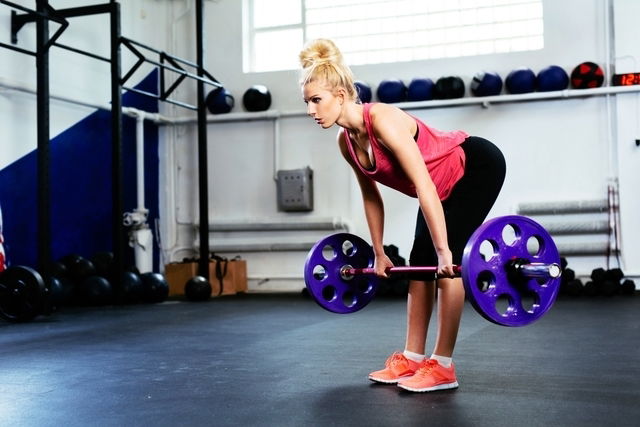
The straight leg deadlift works the hamstrings and glutes, and can be done with a barbell or dumbbells. To perform this exercise, stand up straight holding a barbell or dumbbells in front of your body, at hip level. Bend forward, keeping your arms and back straight and your abdomen contracted. Your knees should be slightly flexed, and the motion should come solely from your hips. Then return yo the starting position, and repeat as indicated on your workout plan.
There is another variation of this exercise known as a “good morning”, in which the deadlift movement is performed with a barbell is placed on the back.
How to perform at home: To perform a straight leg deadlift at home, hold two dumbbells or two similarly heavy objects and execute the same movement.
3. Single-leg deadlift
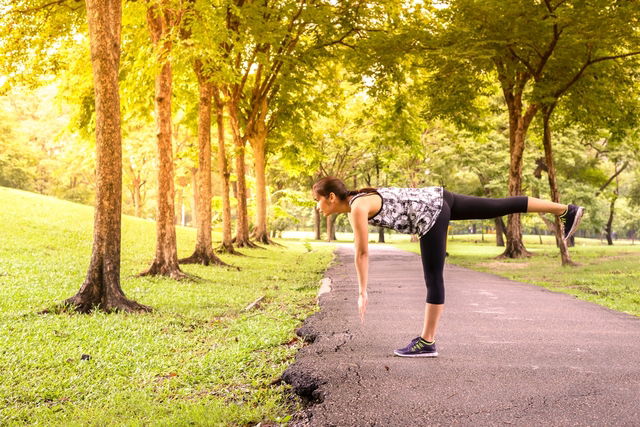
The single-leg deadlift is a variation of the straight-leg deadlift. It also works the hamstrings and flutes, as well as the lower back and abdomen.
This exercise should be done standing, holding a deadlift or kettlebell in front of the body with one hand. The leg on the same side of the dumbbell will stay on the floor, while the opposite leg should kick back behind you. Lower the weight toward your feet, being sure to hinge at the hips and to keep your back straight. Then return to the starting position.
How to perform at home: To perform a single-leg deadlift, use a heavy object or your own body weight to execute the above movement.
4. Romanian deadlift
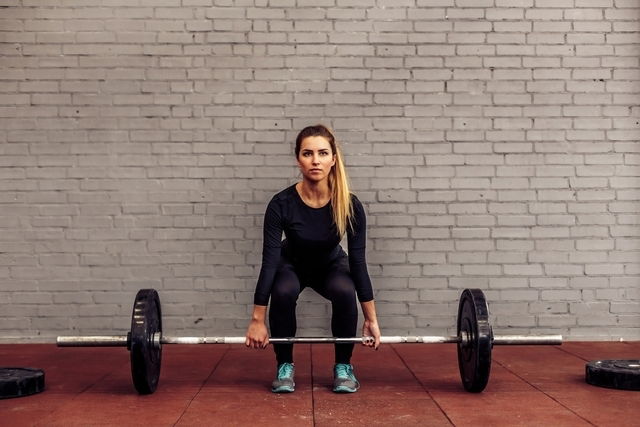
In addition to the hamstrings, the romanian deadlift works various other muscles and joints. It is different from the straight-leg deadlift, as it involves lifting the weight up to hip height using your glutes and hamstrings instead of lowering from hip height. Be sure to keep your back straight and your feet hip width apart.
It is best to perform this exercise in front of a mirror so that you can keep an eye on your posture and correct as needed.
Because this exercise usually requires heavier weights and can cause injury, it is not recommended for a home workout.
5. Seated leg extension
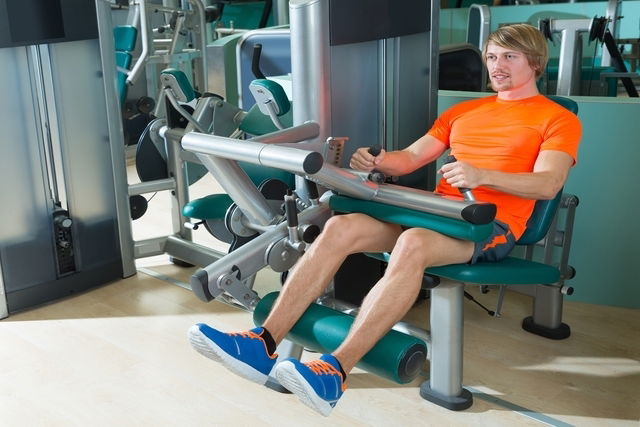
A seated leg extension is ideal for strengthening and hypertrophy of the hamstrings.
Before starting, adjust the seat to your height. Your back should be supported and your knees should be in line with the seet. To start, sit and place your calves behind the horizontal padded bar. Then straighten your legs and lift the bar to extend the muscles, before slowly lowering your legs to a flexed position.
How to perform at home: This exercise can be done with a medium-sized yoga ball, sitting in a chair on . Hold the ball between your ankles with a slight bend at the knees. Lift the ball into the air, being sure to lift your hamstrings from the floor. Then lower it slowly. You should keep your core activated throughout this exercise to stimulate your hamstrings.
6. Leg curls
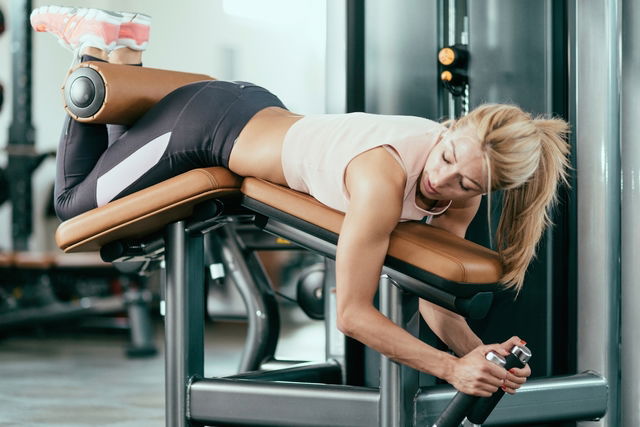
Leg curls are one of the most used exercises to work the hamstrings. Before performing, adjust the machine to the length of your legs to avoid overloading your lower back.
Lie down on the bench, belly down, and tuck your calves under the padded bar. Then lift the bar with your legs, bending your knees to about a 90º angle before lowering it slowly to the starting position. It is important for your hips and legs to remain stabilized throughout this movement, to ensure you are not overloading and injuring your back.
How to perform at home: Although this exercise is more difficult to perform at home, it is possible to adapt it. Lay down on a bench with your belly down and your legs hanging behind you, off the bench. Holding a dumbbell between your feet, bend your knees to a 90º angle and then lower slowly to the starting position.
7. Back extension
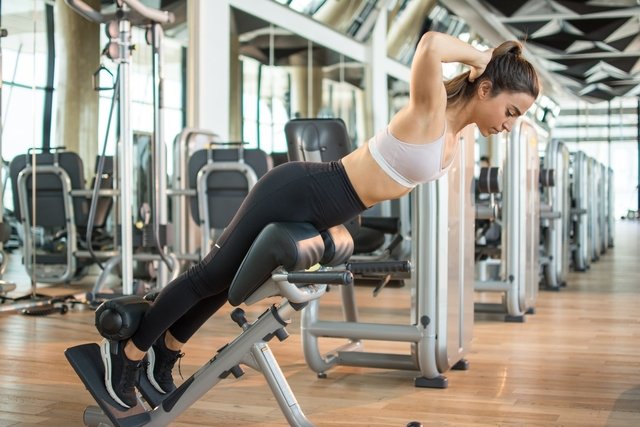
In addition to strengthening the lower back, this exercise also works the hamstrings. To use this bench, support your hips on the pad (they should be the same height) and tuck your calves under the padded bar. This will stabilize your legs. Bend forward at the hips with a straight back. Then contract your core and lift your torso with a straight back, before lowering back to the hanging position.
How to perform at home: Lay down on a mat belly-down with your hands by your head. Lift your torso from the ground, keeping your back straight, then return to the floor. You can have someone hold your ankles to help stabilize you. You can also use a mirror to verify your posture.
8. Glute kickbacks
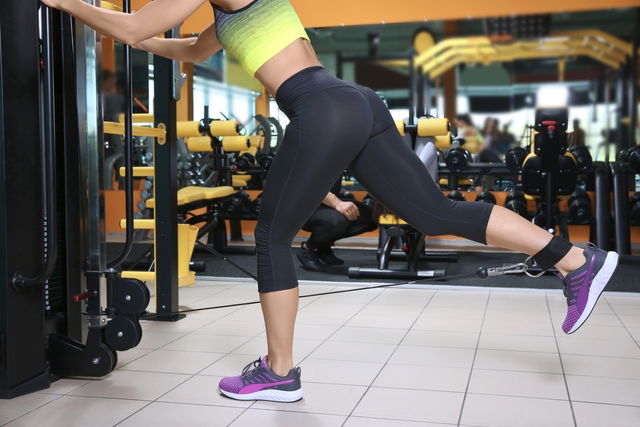
Although this exercise is glute-focused, a kickback can also target the hamstrings. To use the kickback machine at the gym, line your hips with the pad and tuck one calf behind a padded bar. Lift this leg behind you and slowly lower, keeping your other leg firmly on the foot stand or ground.
This exercise can also be done at the cable machine. Clip a cable to an ankle strap, and kick your leg behind you, to perform this same movement.
How to perform at home: Get on all fours with a mat and choose one leg to work first. Kick this leg behind you, keeping the knee bent and aiming your heel toward the ceiling. Then lower the leg down to a starting position and repeat. Then perform on the other leg. To intensify this exercise, you can add an ankle weight.
9. Hip thrusts
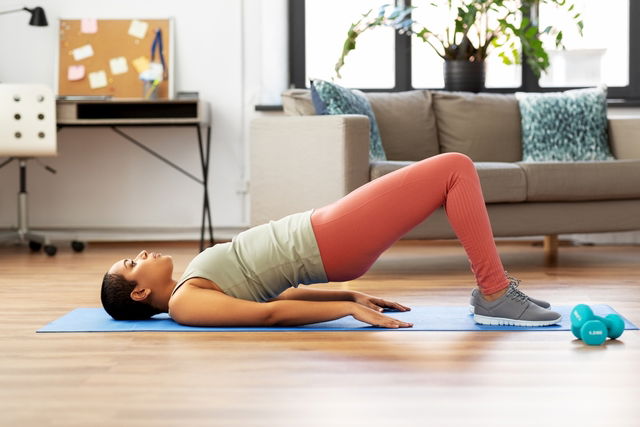
A hip thrust is indicated to work the glutes, abdomen and hamstrings. You can perform this exercise at the gym by sitting on the floor, supporting your back on a bench, and placing a barbell or dumbbell across your hips. Lift the weight using your hips until your knees bend at 90º. Be sure to contract your glutes at the top and lower back down to the initial position.
How to perform at home: Lay on a mat with your belly up and knees bent. Lift your hips from the floor, contracting your glutes. Then lower your hips, being sure to avoid touching the ground, and repeat.
10. Split squats with dumbbells
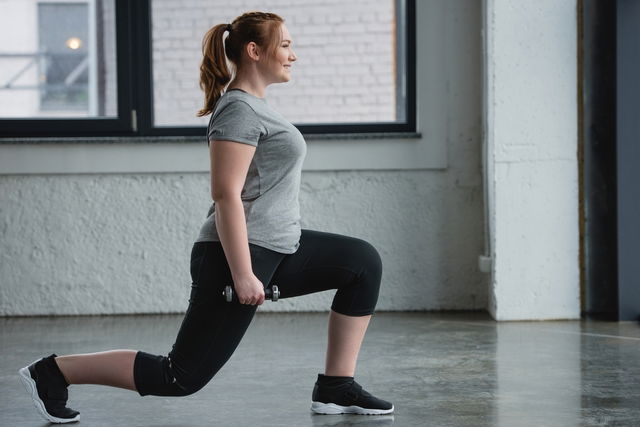
A split squat works the hamstrings and thighs. To perform this exercise, stand with your feet hip width apart. Hold a dumbbell in each hand and take a step forward to place one foot in front of the other. Flex your knees and lower to ground until the thigh of the front leg is parallel to the ground, then return to the starting position. Perform all your indicated reps before repeating on the other leg.
How to perform at home: To complete this workout at home, you can use dumbbells or your own body weight. Be sure to keep your back straight and your core activated throughout the movement.
